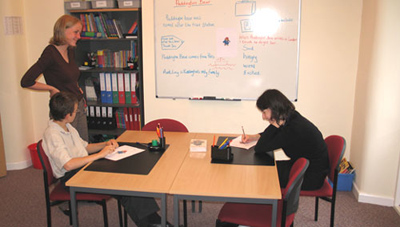
This is Part 1 of the article More Profits From On-going Small Improvements by Abe WalkingBear Sanchez.
Save a step here and a penny there and then repeat it a hundred times, a thousand times, a million times and they add up. Now use/invest the time saved and the money saved to do something productive like looking for further improvements and it really starts to add up. And along with enhanced profitability, people’s lives are changed for the better.
The Japanese have a word, “Kaizen”. Kai means on-going and zen means better…the Chinese word Gaisan breaks down to gai, to correct and san, to benefit. These folks have a history of struggle in order to survive and tend to be pragmatic. We Americans, in our collective memory, believe that there’s always a new virgin forest to be exploited over the next hill. Our mindset about there always being “excess” makes us wasteful in our private and business lives and is a OBSTACLE to on-going improvements.
This is my 25th year of avoiding a real job by conducting seminars and training for CEOs and top business managers and I’m still taken aback to hear business executives say that the purpose of being in business is to make a profit, without any further explanation. There are many ways to make a profit, you can rip the employees off for their retirement plan or fail to fully fund the plan…sound familiar? A company can also make a profit by cheating customers and suppliers or by pulling an Enron. A better way to “earn” a profit is by “Meeting or exceeding customer expectations…at a profit”.
On average 25% of the Total Cost of Doing Business is tied to inefficiencies…the waste of time, energy or materials, and I’ve had many CEOs tell me that 25% is on the low end …that’s a bunch. Nobel Prize winner Ronald Coase , of Coase’s Law , says that there is friction/costs involved with being in business. There is the original friction or cost of finding suppliers, employees and customers. There’s the on-going friction or transactional costs, and then there’s the greatest friction of all… the friction of failure.
Prior to entering the training field in 1982 I had a real job as the corporate credit manager for a regional company based in Denver. My duties as the credit manager included the approval of new credit customers and the management (not collection) of past due A/R. I soon found that on average 70% plus of all past due customers had not paid on time due to “something going wrong somewhere.” In the process of fixing things that had gone wrong I found that I could identify areas of opportunity for improvement throughout the entire supply chain thus driving down everyone’s cost of doing business.
The New Guy Learns From the Old Guy Who Learned From The Dead Guy:
It may not be so in some companies, but all too often employees and business managers still operate from a “They don’t pay me enough to think.” mindset…like automatons they repeat how they do things over and over again until it becomes engrained. And all too often CEOs and top management are complicit if not directly responsible. If you are a business manager pull out your job description, if you’re a CEO pull out your managers’ job descriptions and check to see if it/they say anything about “Constant Improvement”. A business manager not focused on improvement becomes an administrator at best and a bureaucrat at worst.
Before improvement/change for the better can take place two thing must happen; first there must be an acceptance or acknowledgment that a business doesn’t have to be sick in order to improve, there is always room for improvement. Then there must be a commitment made as to who will do what when…and the efforts must be tracked and measured.
Change always generates resistance; expect it in others and in yourself. Tell the affected employees of the changes to be made and then ask why the changes won’t work…take notes for this will become a “to do” list. Keep changes small so that people can succeed, but once they mastered a change introduce the next small change…no stress no change. And of course pay people for doing what you want done…like thinking and coming up with improvements.
An old axiom says that “People respect (do) what is inspected (measured) not what is expected”. Can you imagine the chaos that would result if traffic cops were pulled off the roads? In much the same way business managers need to be told that a primary function of their job is to think, to always be looking for ways to save a step, a minute or a penny…and then they must be measured.
Continued in Part 2 of the article More Profits From On-going Small Improvements.
 Abe WalkingBear Sanchez is an International Speaker / Trainer / Consultant on the subject of cash flow / sales enhancement and business knowledge organization and use. Founder and President of www.armg-usa.com, WalkingBear has authored hundreds of business articles, has worked with numerous companies in a wide range of industries since 1982 and has spoken at many venues including the Shakespeare Globe Theater in London.
Abe WalkingBear Sanchez is an International Speaker / Trainer / Consultant on the subject of cash flow / sales enhancement and business knowledge organization and use. Founder and President of www.armg-usa.com, WalkingBear has authored hundreds of business articles, has worked with numerous companies in a wide range of industries since 1982 and has spoken at many venues including the Shakespeare Globe Theater in London.
Categories